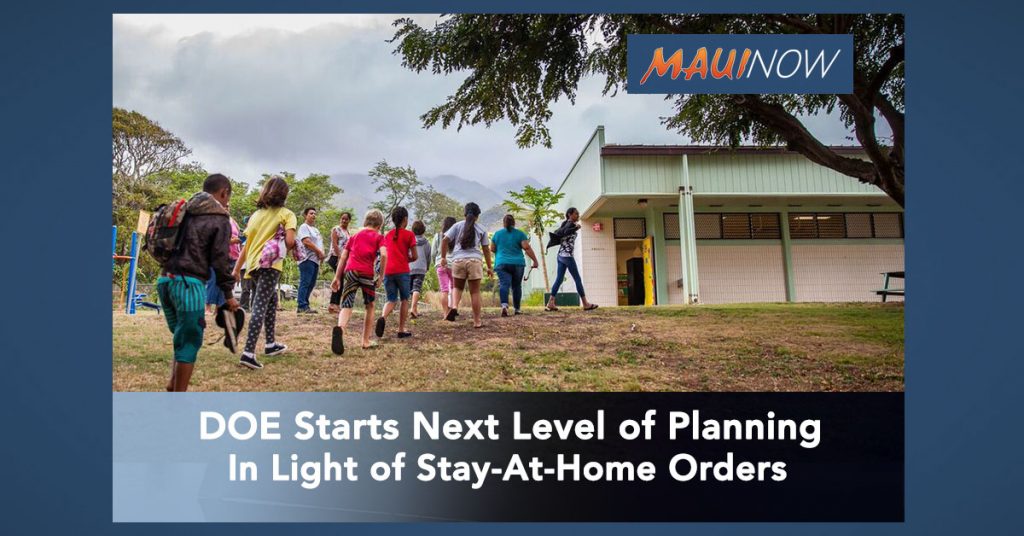Hawai‘i Public Schools Assessing Next Level of Planning In Light of Stay-At-Home Orders

By Wendy Osher
The state Department of Education is assessing next level planning in light of Hawaiʻi’s stay-at-home orders that remain in effect through the end of April. State Superintendent Dr. Christina M. Kishimoto says the state’s 13,000 teachers began telework on Monday as they put together individualized plans for students.
“There are thousands of instances that we can share where a shutdown of public school systems could potentially do more harm than good,” said Dr. Kishimoto in an afternoon press conference on Tuesday. “Our public school system will not close. We continue our efforts as a statewide team, maximizing our telework approach or providing individualized small group support.”
Kishimoto says that by the end of this week, the department will be sharing specific plans for the DOE’s 10,000 eligible graduates. The department will also share its planning work accomplished by teachers and principals this week.
“The Hawaiʻi Department of Education provides essential services that have direct and indirect impacts on a large percentage of Hawaiʻi’s population,” said Dr. Kishimoto. She described a diverse population of students, including special education students, foster children and students without homes, saying the DOE plays a vital role in the well-being of Hawaiʻi’s children.
“Our student population is diverse and includes more than 103,000 high needs students–including 92,000 economically disadvantaged students. We have 19,000 students with disabilities, and we have approximately 3,000 students who are without a home,” she said.
“The department has a responsibility to stay connected through attendance and continuity of education, while providing enrichment opportunities for our students,” said Dr. Kishimoto. “Keep in mind, some of our students live in homes in which their parents are in crisis. It will become even more difficult when hourly wage earners lose access to employment,” she said.
She noted that part of the DOE’s work is to take attendance which allows teachers to check in on students and their families.
“Our public school system will not close. We continue our efforts as a statewide team, maximizing our telework approach or providing individualized small group support,” said Dr. Kishimoto.
The DOE began five days of planning on Monday. “Our teachers are putting together individualized plans for their students by school level. We’ll be looking at a grading approach to the end of the year on graduation requirements and how we can meet those… and also looking at whether we will have to make up some of the instructional time,” said Dr. Kishimoto.
“Each day that we add to the school year has cost implications to the school system and to the state of Hawaiʻi if we were to extend the year. We will be looking creatively at added time–whether that’s this year, this summer or next school year,” said Dr. Kishimoto.
“The school system is not closed. We are teleworking, so all of our employees are engaged in working from home using technology. Our school buildings and our students are not in schools until April 7–that still stands,” according to Dr. Kishimoto who said further details would be released later this week.
“Over the next few days, with the planning that’s taking place by teachers for an instructional support design model for the rest of the year; and in consideration of the stay-at-home population from some of the mayors and the governor, we will be announcing our next level of planning in terms of how our students will be reached, how they will receive instructional materials, and how we will continue to engage with parents,” said Dr. Kishimoto.
“The school buildings themselves are closed through the 7th (of April) with the exception of the 40 school buildings that have specific times periods in which we are providing breakfast and lunch for any student under the age of 18 that comes to one of those 40 sites,” she said.
On Monday, food service staff members provided more than 1,000 breakfast meals on and 2,600 lunches as part of a Grab-and-Go meal program. The DOE implemented the Seamless Summer Option program a few months earlier than scheduled to meet the needs of students during the extended summer break.










